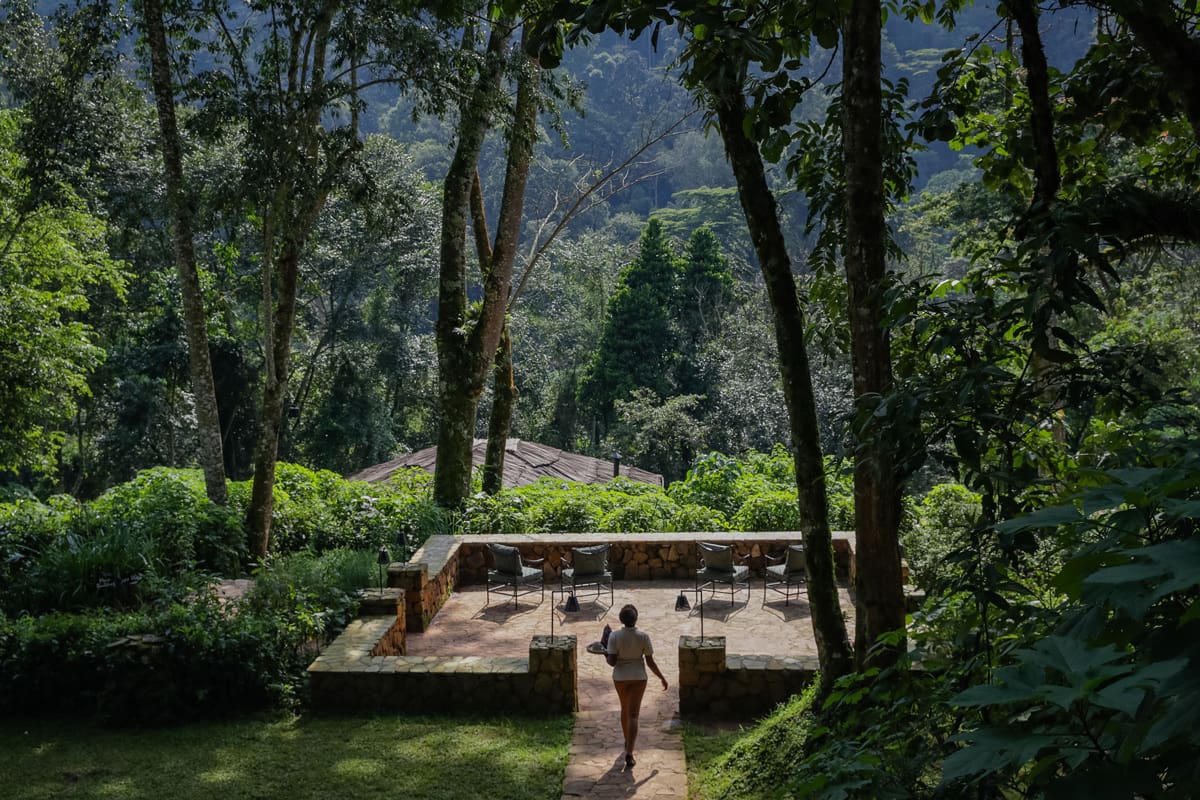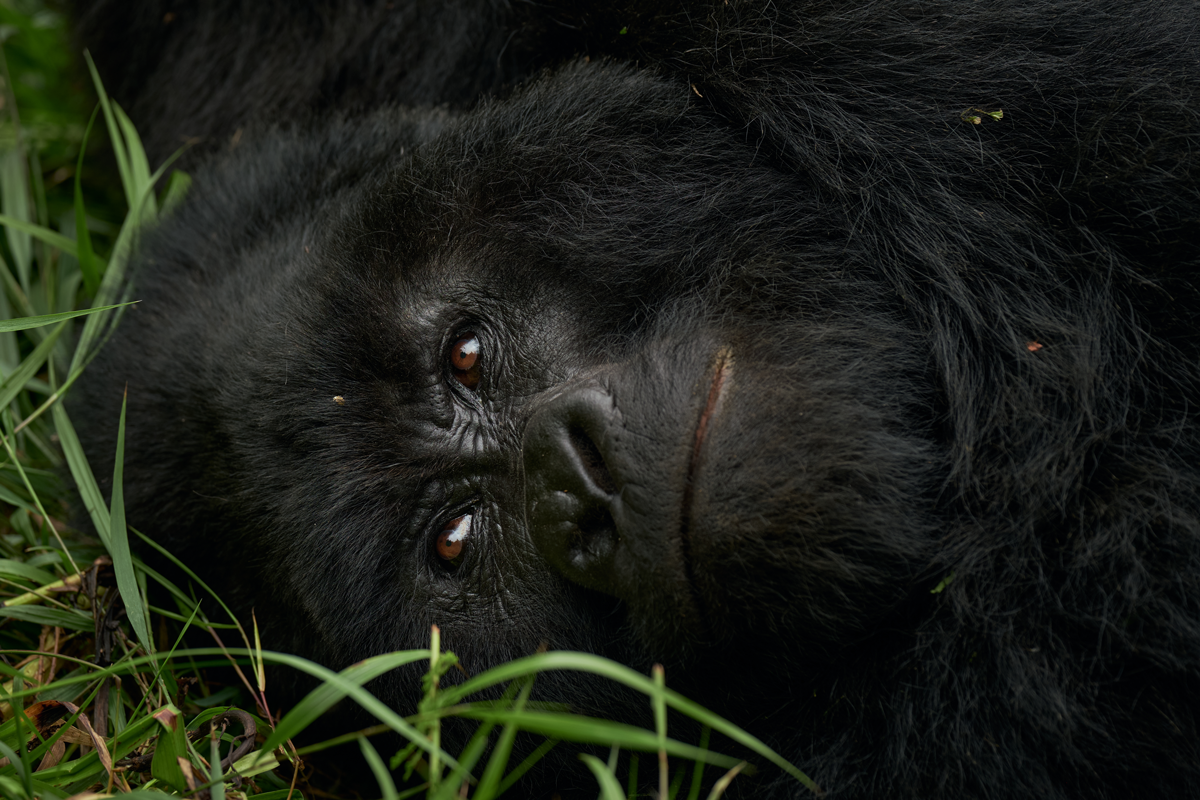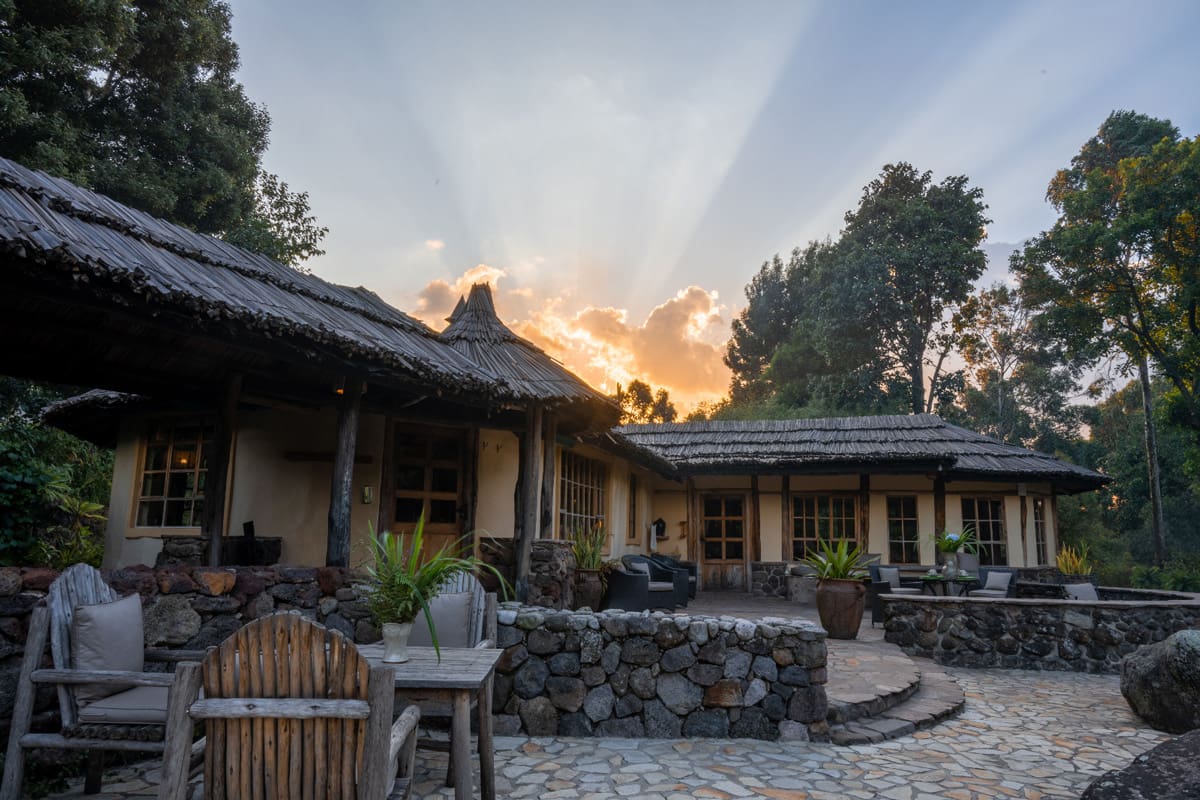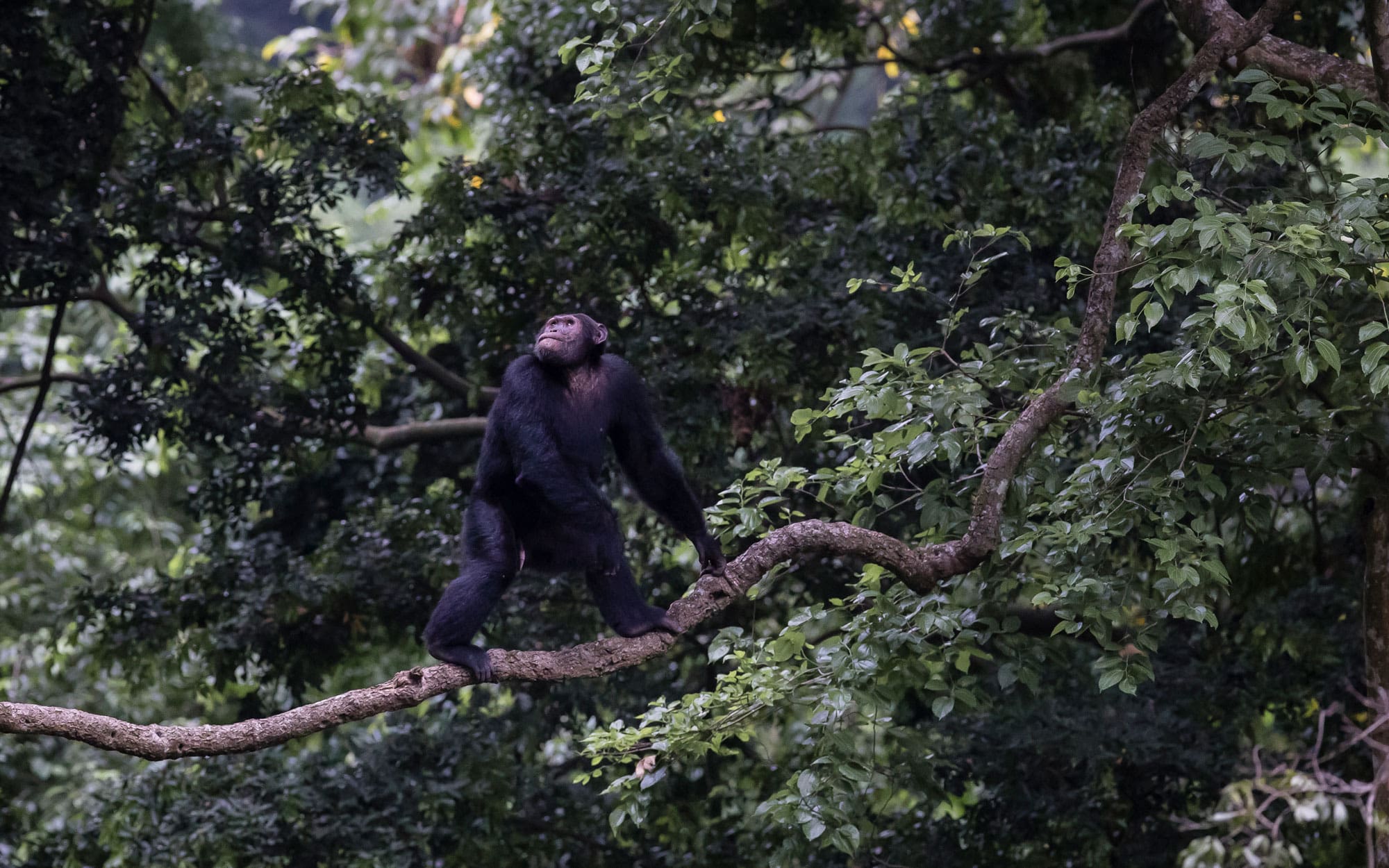With my muscles still aching from the steep climb to reach the Susa gorilla family two days earlier, I walked into the Volcanoes National Park headquarters in Kinigi, Rwanda, to sign in for another trek. I had been so nervous before that first gorilla trek wondering how I would handle the high-altitude climb and if the gorillas would live up to my expectations. But not today. I had survived the hike and had an amazing time with Susa, and now I was going to see the park’s golden monkeys.
An easy, affordable wildlife viewing experience, golden monkey treks give visitors the chance to get up close and personal with the Virunga Volcanoes’ lesser-known but equally endangered primate species. Once thought to be a subspecies of the blue monkey, which is found throughout East and Central Africa, golden monkeys are only found in the Virunga Volcanoes Massif (which includes Rwanda’s Volcanoes National Park, Uganda’s Mgahinga National Park, and the Democratic Republic of Congo’s Virunga National) and Nyungwe National Park in southwestern Rwanda. There are only three groups of golden monkeys habituated for tourists, two in Volcanoes National Park and one in Mgahinga National Park.
Golden monkeys face many of the same threats that affect mountain gorillas including habitat loss and poaching. The monkeys also come out of the parks occasionally to raid crops, which can get them into trouble. Luckily, bamboo shoots and leaves are the monkeys’ favorite food, so they tend to spend most of their time in the national parks’ lower elevation bamboo zones.
Unlike the heart-pounding hike to see gorillas, the relaxed walk through farmers’ fields and into the park’s bamboo zone gave me the chance to take in the beauty of the forest. With towering shoots up to 10 meters high bending inward, the bamboo created a kind of natural cathedral. The tufted heads of the bamboo, with little green leaves fluttering in wind, created dancing spots of spots of light on the ground. The forest was silent except for the occasional moaning and creaking of bamboo shoots rubbing together. And then, all of a sudden I heard chirping noises and the sound of little bodies crashing through the canopy.
My guide pointed up, and a funny little face with inquisitive eyes and golden whiskers stared down at me. Suddenly he jumped over my head and disappeared into the underbrush. All around me, the bamboo was shaking with monkeys. The guide said this particular group of monkeys, the Kabatwa family, had 90 members, and it certainly seemed like dozens were around me. There were youngsters and females with golden bodies and faces and long dark tails, limbs, and crowns. The adult males were significantly larger, weighing up to 25 lbs, and had copper-colored backs and shoulders.
While my encounter with mountain gorillas was humbling and awe-inspiring, viewing the monkeys was just plain fun. The curious critters scrambled all around, almost as interested in the tourists as we were in them. A tiny baby gripped its mothers’ shoulders as she bounced from branch to branch. Swinging perilously from side to side, three juveniles fought for the best vantage point—a square-inch of space atop the tallest bamboo shoot. Confident adult males hung just feet above us, almost modeling for the cameras. Twigs and leaves rained down as they devoured new bamboo branchlets.
Unlike with the mountain gorillas, you’re allowed to use flash with the golden monkeys, so it’s possible to take nice portraits even with the backlighting. I used manual focus as the autofocus had a hard time with the layers of branches. Like gorilla trekking, it’s a good idea to dress for rain and muddy conditions, bring water and snacks, and follow your guide’s instructions about health and safety matters. Talk to your Volcanoes Safaris booking agent about reserving permits for your trip!





